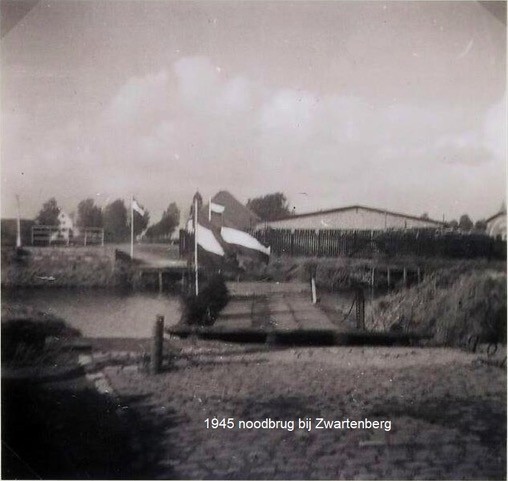On the same afternoon that the village of Leur was liberated, American reconnaissance units moved towards the bridge over the River Mark. The German forces were on the retreat, and time was of the essence. Lieutenant Campbell, a British engineer, accompanied the US troops with orders to assess the situation at the bridge and, if necessary, make plans for an emergency bridge.
At around 19:00, American forces reached Zwartenberg Mill, but machine-gun fire from Boutweg road prevented further progress. During the night, patrols managed to reach the south bank of the Mark undetected via the Zwartenberg polder. The area around the bridge, blown up earlier in the night, proved to be heavily defended with barbed wire, landmines and a ‘roadblock’ on the road to Zevenbergen city. Regular artillery fire from Zevenbergen and Langeweg village further complicated an attack. The American commander concluded that a crossing at this location was not feasible. Campbell had to return to his unit without success, building a bridge proved impossible.
Civilians were also badly affected by the violence of war. The Rommens family, consisting of 14 people, came under crossfire from both sides. At the urging of the American troops, they and 25 others from the hamlet of Zwartenberg evacuated towards the Zwartenberg Mill with white ribbons on their heads. An American sentry then led them via the Leurse Vaart to Leur village. Arriving in Leur, a member of the Rommens family climbed the church tower and saw their farm, located at the intersection of the Zeedijk and the Groenedijk dykes, was on fire. The house and all livestock were also lost.
After the liberation, an emergency bridge was constructed, and years later a permanent road bridge was built at a different location.
On 5 May 2013, veterans of the Timberwolves visited the area near Zwartenberg hamlet. They commemorated the fighting, which they called the ‘Battle of the Dykes’, and unveiled a plaque in the Domineesgang street in Leur which commemorates these events.
